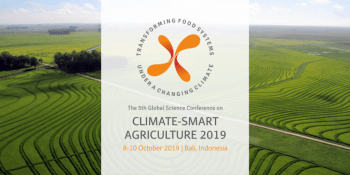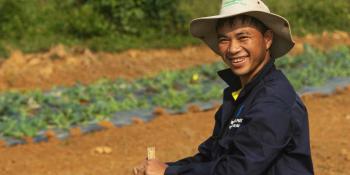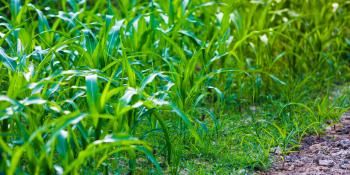Kenya integrates climate-smart agriculture into its Intended Nationally Determined Contribution

Summary
The research was implemented in collaboration with the Center for International Forestry Research (CIFOR), the World Agroforestry Centre (ICRAF), the International Livestock Research Institute (ILRI) and the International Center for Tropical Agriculture (CIAT).
CCAFS scientists at the Center for International Forestry Research (CIFOR), the World Agroforestry Centre (ICRAF), the International Livestock Research Institute (ILRI) and the International Center for Tropical Agriculture (CIAT) provided inputs into the development of Kenya’s Climate-Smart Agriculture Framework Program (CSA-FP), aimed at guiding investments into climate resilient and low carbon agriculture. As of July 2015, the CSA-FP was integrated into Kenya’s Intended Nationally Determined Contribution (INDC) submission to the United Nations Framework Convention on Climate Change (UNFCCC). The INDC identifies both mitigation and adaptation components from the CSA-FP, and lists forestry and other land use sectors where capacity building for GHG inventories with CIFOR and ILRI is a priority. CCAFS scientists also developed targetCSA, a prioritization tool, which the Kenyan government has requested to pilot in preparation of the INDC. Kenya’s INDC aims to reduce the country’s greenhouse gas (GHG) emissions by 30% by 2030, relative to a business-as-usual scenario of 132 Mt CO2eq. The Framework Program will draw from a pool of an estimated USD 40 billion in mitigation finance, which will be mobilized by 2030.
One of the key science-policy engagement efforts leading up to this outcome was the CCAFS led process on “Taking Forward Kenya’s NCCAP 2013-2017’’. The meeting created momentum for implementation of the Agriculture priority actions in the NCCAP. The CSA-FP therefore creates the national mechanism to achieve this goal. Of importance too is not just the technical support offered by CCAFS and other CGIAR partners in the working sessions on developing the national CSA-FP but also the visit by Kenya MEWNR officials to the GHG laboratory facilities at ILRI. Additionally, consultative dialogues were held with the United Kingdom’s Department for International Development (DFID), Germany’s agency for international cooperation (GIZ), County Governments and the private sector in Kenya to build consensus for wider policy changes that respond to investments that are anticipated from the CSA-FP. These meetings culminated in a national validation workshop on June 30, 2015, which was attended by stakeholders from academia, county governments, non-governmental organizations, research institutions and the private sector.
Key facts
- Kenya’s INDC aims to reduce GHG emissions by 30% by 2030. This includes action in the agricultural sector, informed by the Climate-Smart Agriculture Framework Program, supported by CCAFS and other CGIAR centres.
Lessons: key elements of success
- In addition to technical support from CCAFS and other CGIAR Centers, visits by Kenyan officials and consultative dialogues with stakeholders helped build consensus for wider policy change
Further reading
- Climate action in Kenya: New national plan launched
- Exploring targeting options for climate-smart agricultural investments in Kenya
- Fatuma Hussein, Director Climate Change Secretariat within the Ministry of Environment, Water and Natural Resources in Kenya, speaks about Kenya's National Adaptation Planning Process
Related research outputs
- Chesterman S, Neely C, (Eds.). 2015. Evidence and policy implications of climate-smart agriculture in Kenya. CCAFS Working Paper no. 90. Copenhagen, Denmark: CGIAR Research Program on Climate Change, Agriculture and Food Security (CCAFS).


